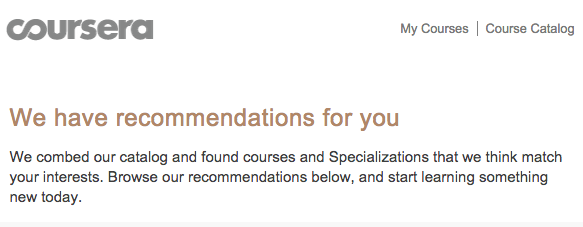“Personalized learning” is that one area of research and practice that brings to the forefront many of the debates and issues that the field is engaging with right now. If one wanted to walk people through the field, and wanted to do so through *one* specific topic, that topic would be personalized learning.

Personalized cans? (CC-licensed image from Flickr)
Here’s are some of the questions that personalized learning raises:
- We have a problem with labels and meaning in this field. Heck, we have a problem with what to call ourselves: Learning Technologies or Educational Technology? Or perhaps instructional design? Learning Design? Learning, Design, and Technology? Or is it Learning Science? Reiser asks: What field did you say you were in? The same is true for personalized learning. Audrey Watters and Mike Caulfield ask what does “personalized learning” mean and what is the term’s history? Does it mean different pathways for each learner, one pathway with varied pacing for each learner, or something else?
- The Chan-Zuckerberg initiative and the Bill and Melinda Gates Foundation endorse personalized learning. What is the role of philanthropy in education in general and educational technology in particular? Should educators and researchers “beware of big donors” or should they enthusiastically welcome the support in the current climate of declining public monies?
- Where is the locus of control? Is personalization controlled by the learner? Is the control left to the software? What of shared control? Obsolete views of personalization and adaptive learning focus on how the system can control both the content and the learning process ignoring, for the most part, the learner, even though learner control appears to be an important determinant of success in e-learning (see Singhanayok & Hooper, 1998). The important question in my mind is the following: How do we balance system and learner control? Such shared control should empower students and enable technology to support and enhance the process. Downes distinguishes between personalized learning and personal learning. I think that locus of control is the distinguishing aspect, and that the role of shared control remains an open conceptual and empirical question. Debates about xMOOCx vs cMOOCs fall in here as well as the debate regarding the value of guided vs discovery learning.
- How do big data and learning analytics improve learning and participation? What are the limitations of depending on trace data? Personalized learning often appears to depend on the creation of learner profiles. For example, if you fit a particular profile you might receive a particular worked-out example or semi-completed problem, and problems might vary as one progresses through a pathway. Or, you might get an email from Coursera about “recommended courses” (see my point above regarding definitions and meanings). Either way, the role that large datasets, analytics, and educational data science – as well as the limitations and assumptions of these approaches, as we show in our research – is central to personalization and new approaches to education.

- What assumptions do authors of personalized learning algorithms make? We can’t answer this question unless we look at the algorithms. Such algorithms are rarely transparent. They often come in “black box” form, which means that what we have no insight into the processes of how inputs are transformed to outputs. We don’t know the inner workings of the algorithms that Facebook, Twitter, and Google Scholar use, and we likely won’t know how the algorithms that EdTechCompany uses work to deliver particular content to particular groups of students. If independent researchers can’t evaluate the inner workings of personalized learning software, how can we be sure that such algorithms so what they are supposed to do without being prejudicial? Perhaps the authors of education technology algorithms need a code of conduct, and a course on social justice?
- Knewton touts its personalization engine. Does it actually work? Connecting this to broader conversations in the field: What evidence do we have about the claims made by the EdTech industry? Is there empirical evidence to support these claims? See for example, this analysis by Phil Hill on the relationship between LMS use and retention/performance and this paper by Royce Kimmons on the impact of LMS adoption on outcomes. If you’ve been in the position of making a technology purchasing in K-12/HigherEd, you have likely experienced the unending claims regarding the positive impact of technology on outcomes and retention.
- And speaking of data and outcomes, what of student privacy in this context? How long should software companies keep student data? Who has access to the data? Should the data follow students from one system (e.g., K-12) to another (e.g., Higher Ed)? Is there uniformity in place (e.g., consistent learner profiles) for this to happen? How does local legislation relate to educational technology companies’ use of student data? For example, see this analysis by BCCampus describing how British Columbia’s Freedom of Information and Protection of Privacy Act (FIPPA) impacts the use of US-based cloud services. The more one looks into personalization and its dependence on student data, the more one has to explore questions pertaining to privacy, surveillance and ethics.
- Finally, what is the role of openness is personalized learning? Advocates for open frequently argue that openness and open practices enable democratization, transparency, and empowerment. For instance, open textbooks allow instructors to revise them. But, what happens when the product that publishing companies sell isn’t content? What happens, when the product is personalized learning software that uses OER? Are the goals of the open movement met when publishers use OER bundles with personalized learning software that restricts the freedoms associated with OER? What becomes of the open agenda to empower instructors, students, and institutions?
There’s lots to contemplate here, but the point is this: Personalized learning is ground zero for the field and its debates.

2 Pingbacks